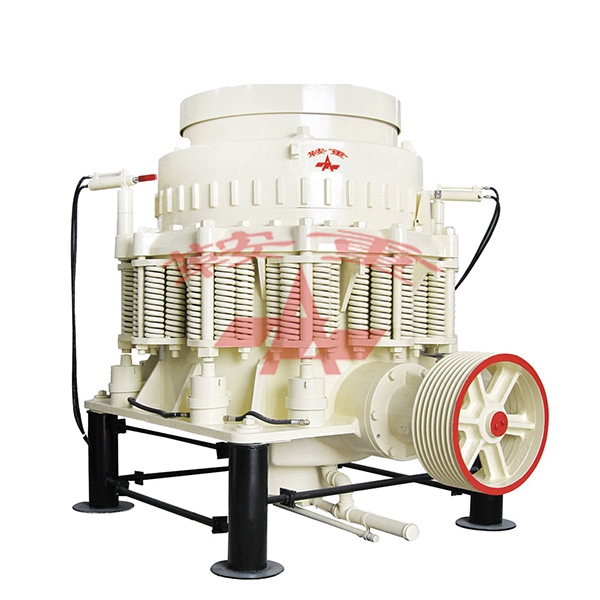
 8 Major Advantages of Anzhong
8 Major Advantages of Anzhong+86 152 4210 2697
All rock crushers can be classified as falling into two main groups. Compressive crushers press the material until it breaks, and impact crushers using the principle of quick impacts to crush the material. Jaw crushers and cone crushers operate according to the compression principle. Impact crushers, in turn, utilize the impact principle.
Jaw crushers are mainly used as primary crushers. Their main purpose is to reduce the material to a small enough size that it can be transported by conveyors to the next crushing stages.
As the name suggests, jaw crushers reduce rock and other materials between a fixed and a moving jaw. The moving jaw is mounted on a pitman that has a reciprocating motion, and the fixed jaw stays put. When the material runs between the two jaws, the jaws compress larger boulders into smaller pieces.
There are two basic types of jaw crushers: single toggle and double toggle. In the single toggle jaw crusher, an eccentric shaft is on the top of the crusher. Shaft rotation causes, along with the toggle plate, a compressive action.
A double toggle crusher has two shafts and two toggle plates. The first shaft is a pivoting shaft on the top of the crusher, while the other is an eccentric shaft that drives both toggle plates.
The chewing movement, which causes compression at both material intake and discharge, gives the single toggle jaw better capacity, compared to a double toggle jaw of similar size. Metso’s jaw crushers are all single toggle.
Cone crushers resemble gyratory crushers from a technological standpoint, but unlike gyratory crushers, cone crushers are popular in secondary, tertiary, and quaternary crushing stages. Sometimes, however, the grain size of the processed material is small enough by nature and the traditional primary crushing stage is not needed. In these cases, also cone crushers can carry out the first stage of the crushing process.
Cone crushers have an oscillating shaft, and the material is crushed in a crushing cavity, between an external fixed element (bowl liner) and an internal moving element (mantle) mounted on the oscillating shaft assembly.

An eccentric shaft rotated by a gear and pinion produces the oscillating movement of the main shaft. The eccentricity causes the cone head to oscillate between open side setting and closed side setting discharge opening.
The fragmentation of the material results from the continuous compression that takes place between the liners around the chamber. An additional crushing effect occurs between the compressed particles, resulting in less wear of the liners. This is called interarticular crushing also.
The cone crushers are equipped with a hydraulic setting adjustment system, which adjusts closed side setting and thus affects product gradation.
Depending on the cone crusher, the setting can be adjusted in two ways. The first way is for setting adjustment to be done by rotating the bowl against the threads so that the vertical position of the outerwear part (concave) is changed. One advantage of this adjustment type is that liners wear more evenly.
Impact crushers are versatile crushing machines that can be used in any stage of the crushing process. However, the features and capabilities of different impact crusher types vary considerably.
Impact crushers are traditionally classified into two main types: horizontal shaft impact (HSI) crushers and vertical shaft impact (VSI) crushers. These different types of impact crushers share the crushing principle, impact, to reduce the material to smaller sizes, but features, capacities and optimal applications are far from each other.
Horizontal shaft impact (HSI) crushers are used in the primary, secondary or tertiary crushing stage. HSI crushers reduce the feed material by highly intensive impacts originating in the quick rotational movement of hammers or bars fixed to the rotor. The particles produced are then further fragmented inside the crusher as they collide against the crusher chamber and each other, producing a finer, better-shaped product.
Vertical shaft impact (VSI) crushers, on the other hand, are used in the last stage of the crushing process, especially when it required that the end product has a precise cubical shape.
VSI crusher can be considered a ‘stone pump’ that operates like a centrifugal pump. The material is fed through the centre of the rotor, where it is accelerated to high speed before being discharged through openings in the rotor periphery. The material is crushed as it hits the outer body at high speed and due to rocks colliding against each other.
Anshan Anzhong Mining Machinery Co., Ltd.
swan0119
No.294 Anqian road, Gaoxin district, Anshan, Liaoning,China
Copyright © Anshan Heavy Duty Mining Machinery Co., Ltd. All Rights Reserved | Sitemap
